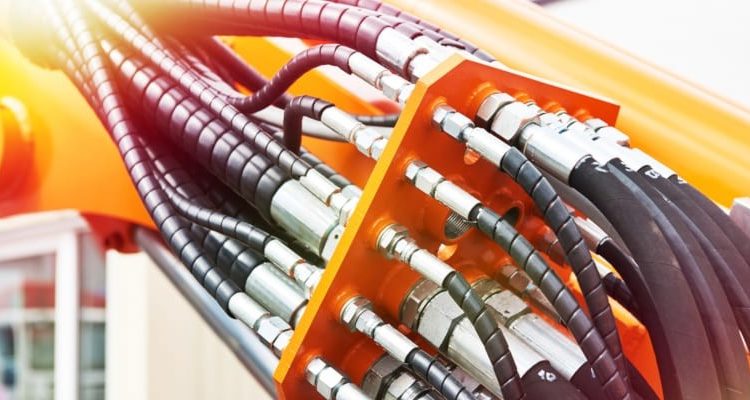Hydraulic hoses are industrial hoses that are used to carry energy-generating fluids between different components, to create a full hydraulic circuit. You could consider the energy-generating fluids as the blood of the machine and industry – so the hydraulic hoses would be similar to the veins! This metaphor reinforces how important hydraulic hoses are.
The Construction of a Hydraulic Hose
A basic hydraulic hose is made up of three layers, the cover, reinforcement, and inner tube. They work together to help maintain a reliable and continuous flow of fluid, whilst protecting the overall hose assembly from abrasion and failure.
The inner tube is in direct contact with the fluid, often created using PTFE, synthetic rubber, or thermoplastic.
The reinforcement layer encapsulates the inner tube and is made up of a coiled or braided wire. It both supports the inner tube and protects it against any damage.
The outer cover is made from a rigid material that is designed to protect the two other layers.
Customising Hydraulic Hoses for Specific Applications
The construction of a hydraulic hose can be customised to meet various applications and certain working conditions. They can change the reinforcement, flexibility, articulation, and surface finish.
Reinforcement – options include textile braids, wire braids and a wire helix.
Coils – the hose can be coiled, a feature used for expansion and easy storage. This enables the hose to stretch in a way that does not create unnecessary pressure.
Corrugation – this is another option for expansion. It improves the flexibility of a hose.
Articulation – this is where the hose is built up in sections with solid shafts connected using flexible joints. This allows hoses to easily bend around corners or move around other components.
Solving Abrasion With Hydraulic Hoses
In order to solve the issue of abrasion, smooth surface hoses are used. This is because using a smooth surface creates less friction and therefore wear on the hose. Overall, the lifespan of the hose is increased.
Rubber smooth hose covers also come with a heat resistant compound within them – so these can work at a higher temperature and are able to have a longer lifespan in harsh conditions.
The alternative to rubber is using thermoplastic. The main difference using this is that it is more lightweight – allowing more hoses to be together in one assembly where weight may be an issue.









